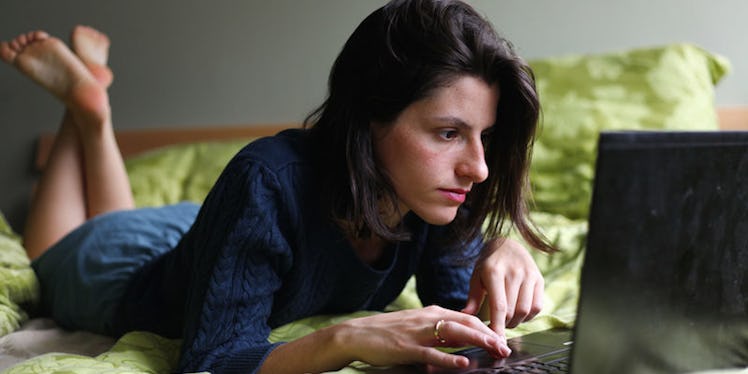When I was in the third or fourth grade, I used to come home on Thursday afternoons in my Catholic school uniform, anticipating the hours until WB’s (now CW) "Charmed."
I’d three-way call my best friends on their home phones during commercial breaks to gush about what just happened.
Today, we follow hashtags to join the conversation on Twitter, and wait for our friends to catch up on episodes on their DVRs before we can talk about them.
The way we watch TV in 2015 has changed so drastically since the early 2000s.
With the popularity of social media and the emerging development of streaming apps and DVRs, many don’t even subscribe to cable TV.
Why should we, when we can easily catch up on our favorite shows the next day on Hulu?
1. “Are you still watching?” Is that even a question?
Netflix has given viewers the opportunity to overindulge in hours of content, from 90s cult TV shows like, "Twin Peaks" to original series like, "Orange Is the New Black."
There is always something to watch.
We grew up having to wait for the next episodes. Now, we don’t have to move a finger for the next episode to automatically begin.
It’s only after a few hours that Netflix has to ask, “Are you still watching?”
Of course I’m still watching.
I just haven’t wanted to move in the past six hours (with the exception of pouring another glass of wine).
Don't you judge me, too.
Back then, broadcast TV gave us our limit. With commercials and a strict hour or half-hour end, it was over. Then, we’d have to wait for next week.
If we wanted to watch more TV, we’d switch channels or endlessly surf the “TV guide” (do people still have these?) for something to fill the empty void.
2. Don’t talk to me until I’ve caught up on my DVR (or Hulu).
Let’s be real: The only people with DVRs are our parents, who still subscribe to that thing called cable.
Yes, they're the same wonderful people we steal the HBO Go password from.
Last night’s episode of "Grey’s Anatomy" used to be the water-cooler topic at the lunch table the next day. Today, we must carefully ask each other who has seen it.
“No spoilers, please! I couldn’t even go on Twitter last night.”
Today, our conversations don’t have to wait until the commercial breaks after the episode, or until we see our friends the next day.
With Twitter hashtags, Facebook updates and even Snapchat stories, the conversations are happening now. But so are the risks for spoilers.
3. If you need me, I’ll be in my room.
Our parents grew up with one TV in their household. Maybe some of us Millennials grew up the same way.
Today, every family member has his or her own iPhone, tablet and computer to stream any kind of content.
Earlier, the TV used to bring the family together on Sunday nights for dinner and conversation. Now, it seems the TV has brought us more apart.
With more available content on several different platforms -- from broadcast TV to streaming applications -- everyone has his or her own show to watch every night.
If my brother doesn’t want to binge-watch "Gossip Girl" with me, he can take over another television in the house or stream our shared Netflix account on his own device.
While it seems TV has made us flee into our rooms to watch our own shows, it's inspired us to continue the conversations on said shows.
With all sorts of technology, apps and shows recorded on DVRs, people are more inclined to ask what you’re watching these days.
So if you’re ever on an awkward first date, be sure to ask the other person what he or she is watching. You’re guaranteed hours of conversation.
4. The “death” of TV has died.
My most recent broadcast TV obsession was Fox’s "The Following." I couldn't get enough of Kevin Bacon’s crazy eyes and the amount of blood and gore.
Once I heard the show had gotten axed, I was devastated for about five minutes.
That is, until I thought, “I hope Hulu picks it up.”
We used to dread the death of our favorite shows. Now, like Jon Snow’s “supposed” death, we’re never really sure if a show is gone for good.
There is always the possibility of a streaming service like Hulu or Netflix picking up a show, along with the pieces of our broken hearts.
This alone gives us hope that not only are TV characters never really dead, neither are shows. If a popular show is gone for good, you can be sure there's a spin-off in the works (I see you, "Better Call Saul").
The way we watch TV is still growing as we speak. We are watching more than we’ve ever watched before.
But who ever said that was a bad thing?
